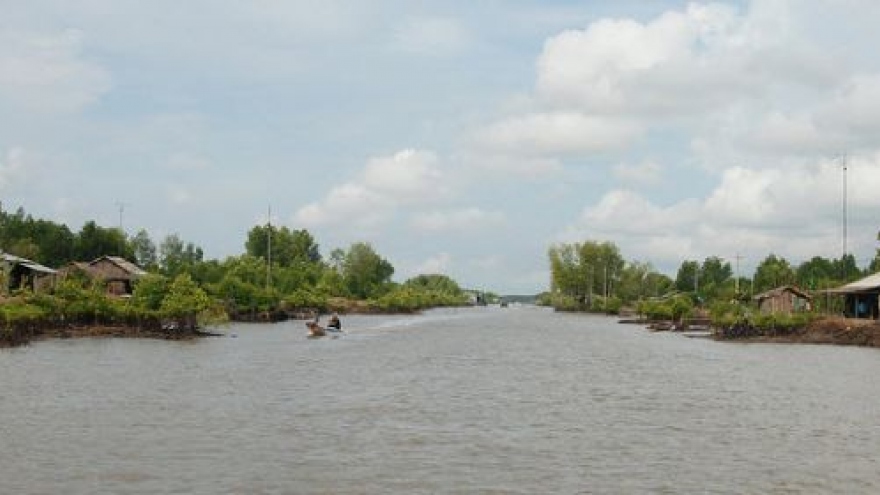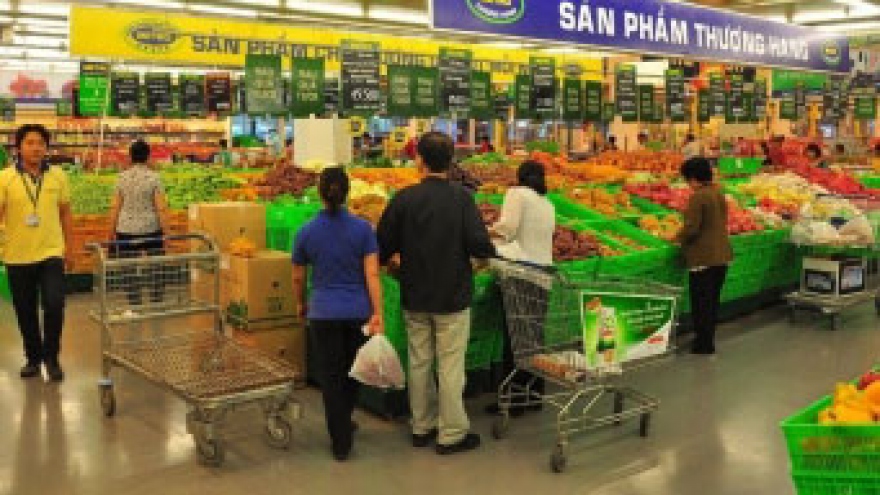No, but seriously. I think it depends on how you would like to spend your holidays in Vietnam. If you want to stay at a nice and cozy beach resort, sipping cocktails and getting a tan, you will want to set your timing different than if you want an active holiday.
But first things first: Vietnam is a long country, stretching over a thousand miles, from Sa Pa in the north to the Mekong Delta in the south. There are roughly two different climates, the northern climate with four seasons and the tropical climate with only two: dry and wet.
The meteorological divide between the two main climates is the Hai Van Pass between Hue and Danang.
Let's start in the south of Vietnam. The dry season lasts from December to the end of April. It is not raining much; the sky is clear and blue. From January to March, there is almost no rainfall at all.
If your goal is to relax at a beautiful beach resort, this is the best time to visit Vietnam. If your destination is in the highlands, Da Lat can, at times, be quite chilly.
If you plan on spending most of your time in Ho Chi Minh City however, the streets during the dry season can get quite dusty. The streets of the city are not really clean, and lack of rain adds to the air pollution. Many Vietnamese wear facial masks. They do it to protect their skin from the sunlight, as well eliminate as much of the motorbike fumes as possible.
The temperature does not fluctuate much in the south. It's always hot in the lowlands, nice and cool in the highlands of southern Vietnam. The hottest time of the year is between March and May. Tourists from colder countries welcome the sweltering heat, but for the locals it is a torture of a special kind. So when the rainy season starts in May or June, most are satisfied with the cooling effects.
The temperature reaches a low from September to December. Together with the end of the rainy season in November, I would say from November until January is the best time to visit the south of Vietnam. It is unsurprisingly the high season of tourism in Ho Chi Minh City as well.
So if you plan to escape the cold, dark winter and stressed relatives during Christmas time, Vietnam is the perfect destination for that purpose. I have also heard that Australians like to leave their even hotter summers behind during that time and find relief in the more balanced climate of Vietnam.
Climate of the north
The north of Vietnam knows four seasons, rather than two. You can decide between the hot and humid summertime and the cool and dry winters. If it rains during the colder time of the year, the rain can get quite nasty, but fortunately that's not often the case.
If you visit the Northern Highlands however, prepare for quite cold winters with a low of around 0°C. It even snows in Sa Pa sometimes. Here is another quick weather guide, if you are especially interested in the weather in Hanoi.
Spring
The best thing about four seasons is springtime, with the air filled with the scent of a thousand flowers when the tropical nature awakens. Springtime in Hanoi is usually wet and damp, before the monsoon arrives in May. While you carry your umbrella and scout for blue spots in the sky, check out for the countless flowers that use the damp weather to bloom.
Summer
Summertime in the north is hot and humid. Expect nothing in particular though, because the global warming causes all kinds of humidity-temperature combinations. Bring an umbrella or a rain coat just in case. The weather might change quickly.
Fall
Autumn in the north of Vietnam is considered the most romantic time of the year. Rainfall and temperature is balanced, the leaves are turning colorful and you can experience a nice and cool breeze. I would say that fall is the best time to visit the north of Vietnam, but the season is quite short. Only a couple of weeks between Mid-September and the end of November.
Winter
Winter in the north is cold. At least for a tropical country. The temperature in Hanoi can get as low as 10°C, together with the humidity, it gets chilly. Prepare for the cold season with proper clothing, but don't get intimidated by my words here. The winter in Vietnam has its own charm, when people gather around the fires of small streetside kitchens, sipping hot tea and eating fresh, hot and delicious street food.
Public holidays in Vietnam
This is another thing to consider when traveling to Vietnam. There are not many public holidays. Almost all the Vietnamese people have a couple of days off and travel to visit their families or spend a few days in another town than their own. Everybody is moving around during public holidays.
If you need to move around during Tet (Lunar New Year Festival) holiday or the National Day, book your tickets early. I am serious! There is no way to get a bus or train ticket during Tet, and if you are extremely lucky, you get a space on the floor between two seats. Even flight tickets to Bangkok and other Southeast Asian cities are sold out.
Hotel rooms cost at least double the price and while many shops in the major cities are closed, the villages and famous travel destinations of Vietnam are bustling with visitors. So if you would like to experience Vietnam during public holidays, either plan ahead carefully or stay static during the storm.
Every year again, I meet people who are nervous and upset because they cannot leave the place where they are currently staying during the chaotic events of Tet holiday. No tickets, everything full, everything booked, everything pricey. They pace around the lobby like locked up tigers and even shout at the employees of the travel agency, who can not help them. Please, don't be one of them.
Check for the date and length of the holiday first. Please mind that the date of most festivals in Vietnam is not a constant factor, but depends on the moon phases. Make sure you have enough time at hand and check your visa expiration date. The embassy is closed during public holiday and if your visa expires, it might get pricy. If you manage to stay relaxed during that time, you get to experience a unique and exciting spectacle!
Typhoons
August to November is the typical season for typhoons, tropical storms with a huge destruction potential. Even if the edges of a typhoon occasionally reach as far as Hanoi, usually the coastal areas of the central region suffer the most.
In general, typhoons have already lost much of their power once they reach Vietnam, but they are extremely hard to predict. If you stay at Hue, Danang, Hoi An or another coastal city while a typhoon is on the way, make sure to check for updates online or with the receptionist at your hotel. Just to be safe.
To come to a conclusion: When is the best time to visit Vietnam? It's anytime. But from September to January is ideal to visit the south, while spring and fall are perfect for visiting the north. If you are not afraid of some rain, the south is yours all year round.








